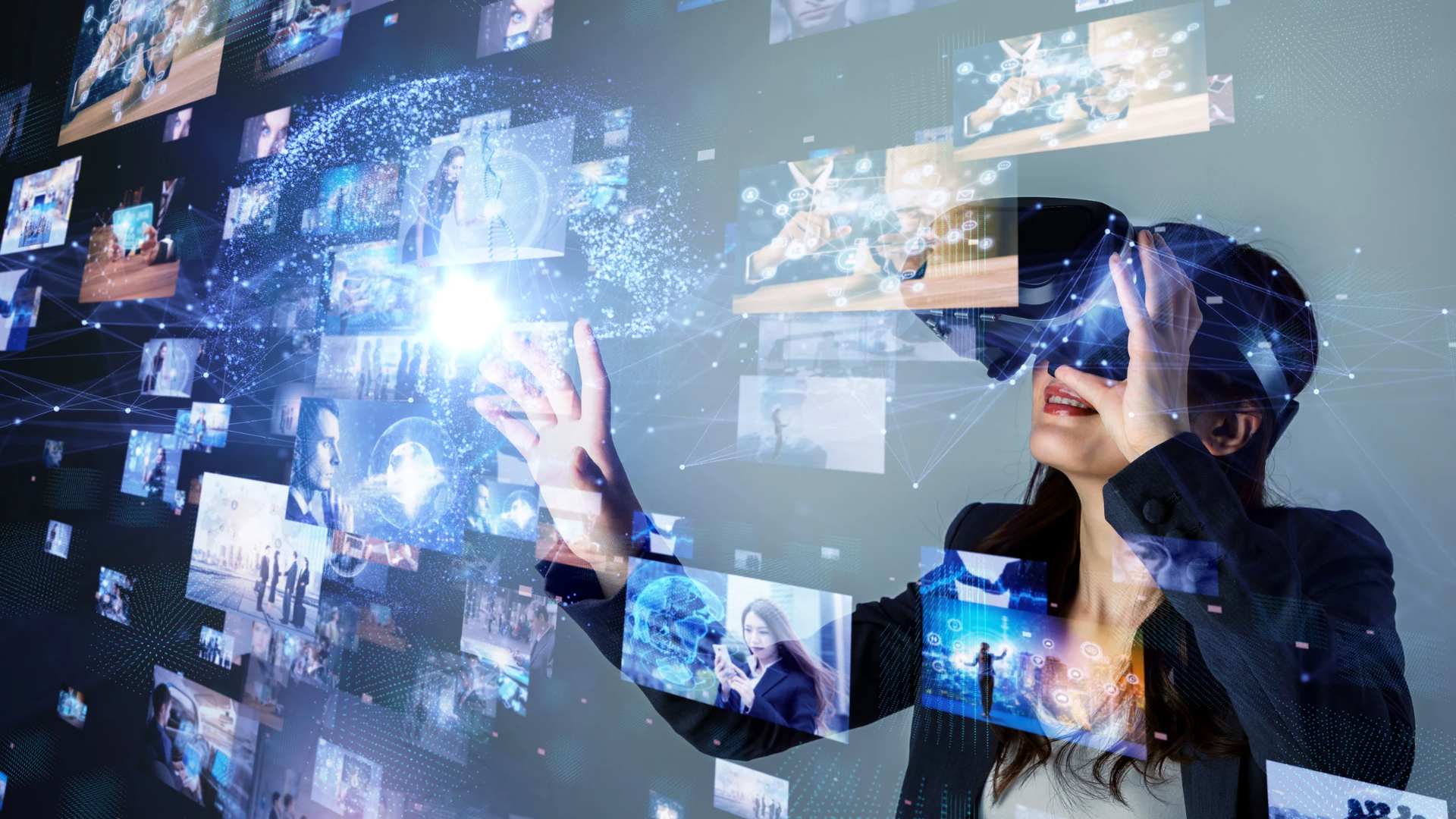
One of the latest technology trends to take the business world by storm is that of virtual reality (VR). It has been adopted by many companies to help streamline their operations, reduce costs, and even increase productivity. In this article, MPR IT Solutions explore the benefits that VR can bring to businesses, and why more and more companies are choosing to use it.
What is Virtual Reality (VR)?
Virtual reality is a computer-generated simulation of a 3D environment that can be interacted with in a seemingly real or physical way. It uses various technologies, including headsets and motion controllers, to create a virtual environment that immerses the user in a full sensory simulated experience. It can be used for a wide range of applications, from entertainment to education and training, and its potential for businesses is immense.
How can virtual reality help businesses increase productivity?
- VR can be used to simulate real-world scenarios, enabling employees to test out new ideas, products, and processes without needing to risk any financial investment.
- VR can be used to quickly and effectively train staff on new tasks, procedures, or industrial automation.
- It facilitates remote collaboration, enabling employees to work together on projects from different locations.
- VR can be used to help businesses streamline their operations and processes.
- VR can help businesses identify potential problems and inefficiencies in their operations, and then suggest solutions to improve productivity.
- By leveraging this technology, businesses can create better products and services, reduce their overhead costs and improve their clients’ experience.
How can businesses use virtual reality to improve clients’ experience?
- Create realistic simulations of products or services to help customers make more informed buying decisions
- Offer virtual tours of stores or factories to give customers a better understanding of how a business operates
- Provide virtual customer service such as troubleshooting software or providing training materials
- The power of VR provides customers with an enhanced and more engaging experience.
What types of virtual reality solutions are available for businesses?
Working with our partners, MPR IT Solutions can provide businesses with a range of virtual reality solutions. These include solutions for training and development, product design and prototyping, engineering and manufacturing, marketing, sales, customer service, and more. Our partners can also develop custom VR applications tailored to the unique needs of your business. With a range of headsets and controllers available, MPR IT Solutions can help you find the perfect solution for your specific needs.
Examples of how can VR be used in different market sectors.
Construction Industry
- VR technology can be used to improve collaboration between project team members, as well as enable companies to create and share virtual prototypes of their projects
- Using VR in the construction industry can enable businesses to visualise a project and consider different aspects of a project before starting construction
- VR can also be used to create virtual inspections of a construction project, helping to identify potential problems before they become costly issues
- The use of VR can create virtual models of the finished project, allowing companies to show potential customers what the project will look like before it is even built
- VR can create better projects and reduce overhead costs
Manufacturing Industry
- VR can be used to create virtual simulations of assembly lines and manufacturing processes, which helps companies identify inefficiencies and reduce production times.
- VR can be used to inspect products during the assembly process, so manufacturers can identify potential problems.
- VR can also be used to create virtual prototypes of products, allowing manufacturers to make changes and improvements before investing in costly physical prototypes.
- VR can be used for employee training, providing employees with immersive training experiences so they can better understand the processes involved.
- Companies can create more efficient production lines and reduce their overhead costs.
VR Marketing in Retail
- Companies are using VR to create engaging experiences for their customers, such as 360-degree videos and immersive content.
- VR can be used to create virtual stores and showrooms to help businesses increase their sales.
- Virtual tours can be created for locations or events, which can be especially effective for businesses in the retail industry.
- Virtual reality can be a powerful tool for businesses looking to make their mark in the marketing world.
- With the right strategy, virtual reality can help businesses grow and attract new customers.
The Education Sector
- Simulate real-life situations to help students better understand concepts and develop skills
- Create virtual classrooms to help students stay engaged and motivated
- Create interactive curriculums and quizzes to measure students’ understanding
- Provide an engaging learning experience and help students acquire the knowledge and skills they need to succeed.
Promote Safety in the Workplace
- Use virtual reality to promote safety in the workplace
- Provide employees with interactive safety training sessions
- Help employees learn how to identify and respond to potential safety hazards in the workplace
- Simulate workplace scenarios
- Use VR to help employees better understand the risks involved in certain tasks
- Allow employees to practice their responses in a safe and controlled environment
- Create more effective training programs
- Reduce the risk of costly incidents
What impact will virtual reality have on the future of business?
Virtual reality (VR) technology has the potential to revolutionise the way businesses operate in the future. By allowing people to interact with an immersive virtual space, VR can help to increase collaboration, speed up decision-making, and improve communication within teams. Companies can also use VR to simulate real-world scenarios that could not be replicated in reality. As technology continues to develop, its applications for businesses will continue to expand. To be a success in the future, businesses should embrace this technology and use it to their advantage.
Ensuring virtual reality solutions are secure?
Creating secure virtual reality solutions is a key concern for businesses. Here are some steps MPR IT recommends and supports to ensure that your VR solutions are secure:
- Limit user access: Restrict access to the VR system to only those users with the necessary authorisation credentials and limit access to people who absolutely need it.
- Create a secure network: Make sure your VR system is connected to a secure network that is protected from external threats.
- Utilise encryption: Use encryption algorithms to protect data while it is in transit as well as while it is stored.
- Monitor activity: Monitor user activity on the system to identify and stop any suspicious activity.
- Use firewalls: Install firewalls and other security features to reduce the risk of malicious attacks.
MPR IT Solutions advice to businesses considering using virtual reality
If you’re considering using virtual reality (VR) solutions for your business, it’s important to do your research first. Make sure you understand what VR can do for your business goals and strategies, as well as the potential limitations of the technology. It’s also important to consider how VR solutions can fit into the existing workflow of your business and be used to improve efficiency. Once you’ve decided on a particular VR solution, make sure to test it out thoroughly before committing to it. This will allow you to determine if the solution is the right fit for your organisation and make any necessary adjustments before implementing it across the board. Finally, make sure to communicate your intentions clearly to any involved stakeholders so that everyone is on the same page and there are no surprises down the line.
Common challenges when implementing virtual reality solutions
When it comes to implementing virtual reality solutions for businesses, there are several common challenges that must be faced.
One of the biggest obstacles is cost. Virtual reality technology can be expensive, especially when it comes to hardware such as headsets, controllers, and computers. Additionally, businesses may need to hire specialised personnel to help them set up virtual reality systems, which can also be costly.
Another challenge businesses may face is creating content for their virtual reality solutions. Creating 3D visuals, programming interactive features, and designing immersive experiences all require specialized skills and expertise. Virtual reality solutions are often data-heavy, so businesses must ensure they have the network infrastructure to handle the amount of data generated by such solutions.
Finally, businesses may need to consider the user experience when implementing virtual reality solutions. Interfaces must be intuitive and easy to navigate, while visuals and audio must be immersive and engaging. Businesses must also think about how users interact with the environment so that users don’t become overwhelmed by the virtual reality experience.
Overall, implementing virtual reality solutions can be a complex and challenging process for businesses. But with the right resources and expertise, businesses can successfully create effective and engaging virtual reality solutions. Contact our team today to discuss how we can help your business implement Virtual Reality 0800 30 20 30.
